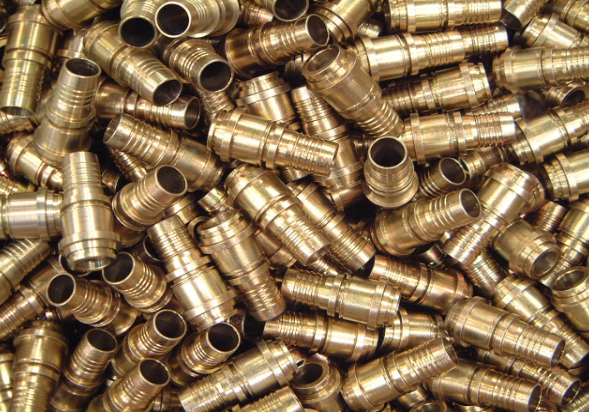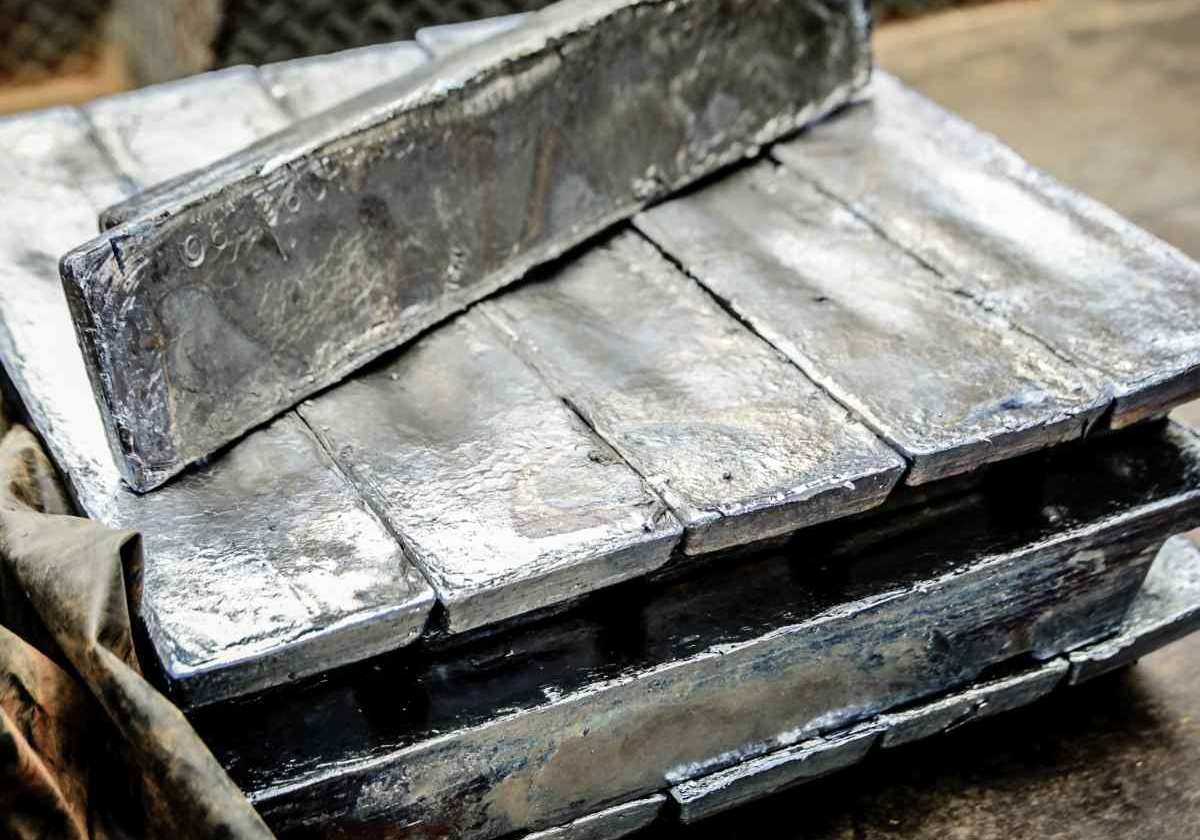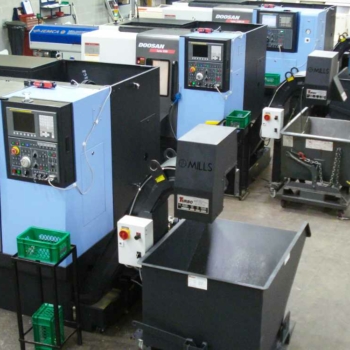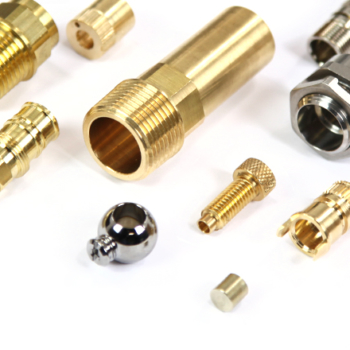Understanding Europe's REACH Regulation and Its Impact on the Brass Turning Industry
Europe’s REACH Regulation can at times be complex to understand – and it’s ever changing to reflect new developments within the industry.
In this article, we explore what the REACH Regulation is and its impact on the brass turning industry – specifically, UK brass exporters to EU countries, along with Norway, Iceland and Liechtenstein.
Whilst this article offers a comprehensive guide, for official advice, it is recommended that you consult the ECHA website.
What is REACH Regulation?
Europe’s REACH Regulation protects people and the environment from chemical risks. It aims to identify harmful substances and enhance innovation in the chemicals industry. The regulation is managed by the European Chemicals Agency (ECHA) and requires manufacturers and importers to register chemical information in a central database.
The regulation has been in force since 2007 and has undergone revisions to reflect new developments within the industry.
Under REACH, chemical substances exceeding 1 tonne per year per company must be registered and evaluated by ECHA and Member States to assess risks. The regulation also includes processes for authorisation and restriction of substances of very high concern.
Additionally, REACH ensures consumer rights by requiring companies to respond to inquiries about harmful substances within 45 days.


How REACH Affects the Brass Industry
Those within the brass industry need to be aware of REACH and its impact on the brass turning industry. This takes many forms, but includes chemical registration; substances of very high concern and restricted substances in brass manufacturing; as well as understanding the role of lead in brass.
Chemical Registration
Manufacturers and importers of brass articles which contain lead above 0.1% w/w must jointly submit their registration to ECHA, ensuring they comply with chemical registration requirements.
This means that companies are responsible for collecting information on the properties and uses of the brass articles if they import more than one tonne per year. They need to assess the hazards and potential risks associated with the substance and communicate this information to ECHA through a registration dossier.
To fulfil their regulatory obligations, importers can request the necessary information from their non-EU suppliers – such as UK manufacturers
Substances of Very High Concern
Identifying substances with specific hazard properties triggers communication obligations for UK exporters, emphasising the importance of understanding the potential risks associated with these substances.
Substances with specific hazard properties, such as being carcinogenic or reprotoxic, can be identified as Substances of Very High Concern (SVHC) under the REACH regulation.
Once a substance is added to the Candidate List, suppliers of the substance, mixtures, or articles containing the substance have communication obligations. This means that they need to inform their customers about the presence of the SVHC in their products and provide safety information.
The addition of lead to the Substances of Very High Concern Candidate List in June 2018 has led to restrictions on brass articles containing lead above 0.1% w/w in Europe.
Why is Lead Added to Brass?
Brass can contain lead for a variety of reasons. For example, the use of lead improves the machinability of the material, making it easier to shape and work with during manufacturing stages.
However, it can also be added unintentionally, such as in the cases of recycled material.
Restricted Substances in Brass Manufacturing
Restricted substances go a step further than SVHC and the Candidate List, and aims to control the production, use, and sale of specific substances that are deemed to pose unacceptable risks to communities.
The 'Restriction List' (Annex XVII) can include Candidate List SVHCs.

REACH Compliance in the Brass Industry
It’s crucial for European importers and UK brass manufacturers alike to have a clear understanding of the REACH requirements. This includes knowing the restrictions and obligations related to the use of certain substances in your products; obligations for communication; and proper data management.
Restricted Substances in Brass Manufacturing
As a brass part manufacturer of articles containing lead, you may be called upon by EU importers to provide accurate information on your product.
Staying up-to-date with regulations is also essential - be aware of the SVHC Candidate List and the potential addition of lead to the Authorisation List (Annex XIV) or Restriction List (Annex XVII). By familiarising yourself with these lists, you can provide the correct information required by importers and make informed decisions regarding the production and importation of brass parts.
Communication and Collaboration Obligations
As established, communication and collaboration obligations form a large part of the requirements for REACH.
Communication is covered in Article 33 and, potentially, Article 7; the former of which will definitely be applicable to brass parts containing more than 0.1% w/w lead, also known as massive articles.
Article 33 obliges manufacturers to communicate the necessary information down the supply chain, so that the importer can provide the name of the substance and its inclusion on the Candidate List as a minimum.
Data Management (SCIP Database)
The SCIP database contains accessible information on articles containing substances that are on the Candidate List.
Information on brass articles containing 0.1% w/w lead will be submitted to the SCIP database by EU importers. EU importers will rely on manufacturers to supply the accurate information required by the database, including article identification, substance concentration, location, and safe use information.
It’s important to note that the window for SCIP submission closed January 2021.
Benefits of REACH Compliance in the Brass Industry
REACH regulations are in place to ensure the safety of product consumers, the environment and more…
Improved Environmental and Health Standards
Europe's REACH regulation on lead aims to improve environmental and health standards.
The restriction aims to primarily protect young children from the adverse health effects of lead, which can be triggered by prolonged exposure to, and consumption of, the substance. Lead can be particularly harmful to children, and can cause developmental delays and learning disabilities; lead exposure can lead to kidney damage, reduced fertility, cardiovascular effects and more.
Children can be exposed to lead in the form of many products – from clothing items and musical instruments played through the mouth, to stationary and interior decoration; the range of items highlights why it is so important that the production, sale, and use of articles containing lead is controlled.
Lead can also have adverse effects on the environment, including:
- Soil contamination
- Water pollution
- Air pollution
- Wildlife poisoning
Enhanced Reputation and Customer Trust
Enhancing reputation and gaining customer trust is achievable by ensuring that brass instruments meet strict safety standards, providing parents and consumers in general with peace of mind.
Research and Development
Through ongoing research and development, the industry is working to create safer alternatives for lead (such as lead-free brass) and other substances of very high concern where feasible. This encourages innovation within the industry for the betterment of society and our environment.
The Future of REACH Regulation and the Brass Industry
Updates of REACH Regulation are inevitable as our research and understanding of substances unfolds.
However, one change we can anticipate is the inclusion of lead on the Authorisation list.
Whilst this is not guaranteed, it is a reminder that UK brass manufacturers need to be aware of the substances on the SVHC list and any changes in their obligations for communication to importers when importing products to the EU.




